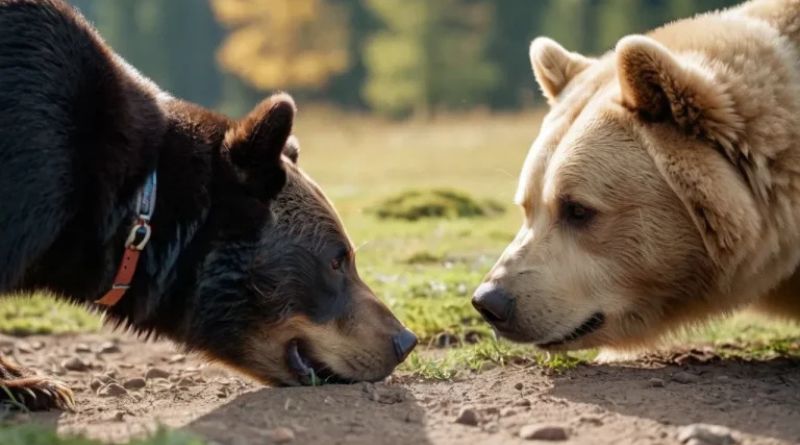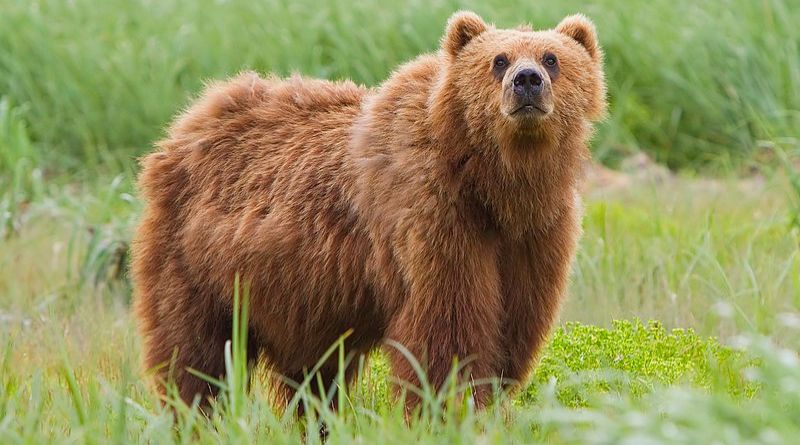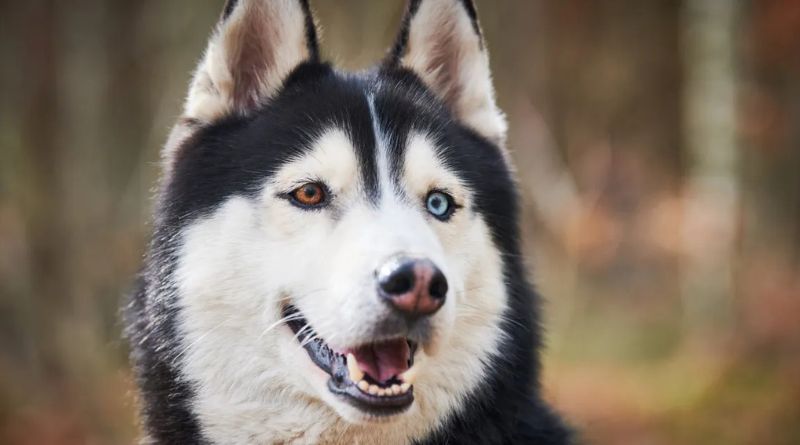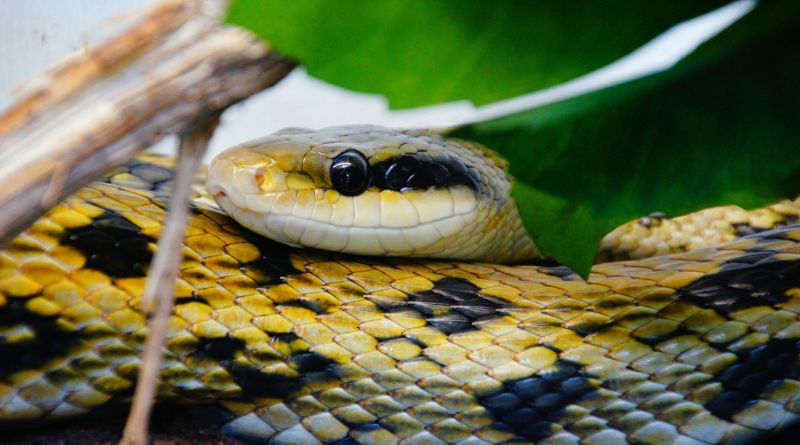The relationship between bears and dogs has long been a topic of curiosity, with many people wondering whether these two distinct species share a common ancestry. While bears and dogs may seem vastly different in terms of size, behavior, and habitat, the question of whether they are related is rooted in evolutionary biology and the broader classification of animals. In this article, we will explore the fascinating connection between bears and dogs, delving into their evolutionary origins, shared characteristics, and the scientific understanding of their relationship.
Table of Contents
The Origins of Bears and Dogs
To understand the relationship between bears and dogs, we need to look back in time to their evolutionary origins. Both animals are members of the order Carnivora, which includes a wide range of meat-eating mammals. However, this order is quite broad, and the species within it have diverged over millions of years.
1. Carnivora: The Order of Meat-Eating Mammals
Carnivora is an order of mammals that includes both cats (Felidae), dogs (Canidae), and bears (Ursidae), as well as other families like weasels, raccoons, and hyenas. This order is characterized by certain skeletal and dental features that are adapted for a carnivorous diet, such as sharp teeth and claws for hunting and eating meat. However, not all members of Carnivora are strict carnivores; some have evolved to become omnivores or herbivores.
2. The Ancestor of Bears and Dogs
Bears and dogs share a common ancestor that lived millions of years ago, but they have since evolved along different paths. This common ancestor is believed to have been a small, carnivorous mammal that lived around 55-60 million years ago, shortly after the dinosaurs went extinct.
From this early ancestor, the two groups of animals began to diverge. The ancestors of modern dogs eventually evolved into a separate family, Canidae, while the ancestors of bears formed the family Ursidae. Despite this divergence, the two families still share many similarities in their skeletal structure and certain behavioral traits due to their shared ancestry.
Similarities Between Bears and Dogs
While bears and dogs are distinct in many ways, there are several similarities between them that suggest a shared evolutionary past. Let’s explore some of these common features:
1. Carnivorous Diets (with Variations)
Both bears and dogs are classified as carnivores, although the specifics of their diets can vary greatly. Dogs, particularly wolves, are known for being obligate carnivores, meaning that they primarily hunt and consume other animals. Domestic dogs, however, have adapted to eating a more varied diet that can include plants and processed foods.
Bears, on the other hand, are more diverse in their diets. While species like the grizzly bear and polar bear are primarily carnivorous, others like the black bear and the giant panda are omnivores, eating a combination of plants, fruits, and animals. The brown bear and black bear, for instance, have a varied diet that may include berries, fish, small mammals, and even carrion.
2. Similar Body Structures
Both bears and dogs share certain physical characteristics due to their common evolutionary roots. These similarities include:
- Claws: Both animals have sharp claws, though bears tend to have larger, more powerful claws suited for digging and tearing, while dogs use theirs for digging, running, and grasping.
- Skeletal Features: Bears and dogs have similar skeletal structures, particularly in the limbs, which allow for running, climbing, and digging. Bears, however, have adapted their limbs for walking on all fours or even standing upright, while dogs are more specialized for running.
- Teeth: Both animals possess sharp teeth, especially the carnassial teeth, which are designed for shearing meat. However, bears have broader teeth that allow for a more varied diet, while dogs typically have narrower, sharper teeth adapted for slicing through meat.
3. Social Behaviors
Both bears and dogs can exhibit social behaviors, although they do so in different ways. Wolves, the closest living relatives of domestic dogs, live in highly social packs with complex social hierarchies. This is in stark contrast to most bear species, which are solitary animals. However, some bear species, like the brown bear, may form loose groups or gather in areas where food is abundant, such as around salmon streams during spawning season.
Dogs have also been domesticated to live alongside humans and have evolved to form deep bonds with their human families. In contrast, bears maintain their solitary lifestyles, with interactions between individuals being less common and often centered around mating or territory disputes.
4. Communication Methods
Both bears and dogs communicate using vocalizations, body language, and scent marking. Dogs use barking, growling, whining, and other vocalizations to express emotions and communicate with humans and other dogs. Bears, while generally quieter, use growls, roars, and other sounds to communicate, especially when threatened or during mating seasons. They also rely heavily on scent marking to establish territory.
Key Differences Between Bears and Dogs
Despite their shared ancestry, bears and dogs have evolved along very different paths and have significant differences in terms of behavior, physiology, and lifestyle. Here are some key distinctions:
1. Size and Physical Power
One of the most obvious differences between bears and dogs is their size. Bears are generally much larger and more powerful than dogs. While a large dog may weigh around 100 pounds, some species of bears, like the grizzly or polar bear, can weigh upwards of 1,000 pounds or more. This vast size difference is reflected in their physical capabilities—bears are far stronger and more capable of overpowering large prey, whereas dogs rely on speed, agility, and pack coordination to hunt.
2. Habitat Preferences
Dogs are highly adaptable and have been domesticated to live in a variety of environments alongside humans, from urban areas to rural farms. They have been bred for various purposes, including herding, hunting, guarding, and companionship. In contrast, bears primarily live in the wild, with some species found in forests, tundras, and even mountain ranges. Bears also require large territories to roam, especially larger species like brown bears.
3. Reproduction and Lifespan
Bears and dogs also differ in their reproductive habits. Bears have longer gestation periods and give birth to fewer offspring compared to dogs. A typical bear may give birth to one to three cubs every two to four years, while a dog can have multiple litters of puppies each year, with larger litters on average.
Bears also have a much longer lifespan compared to dogs. While a domestic dog’s average lifespan is around 10 to 15 years, many species of bears can live 20 to 30 years in the wild, and even longer in captivity.
4. Behavioral Differences
Dogs, especially those that have been domesticated, are often more trainable and eager to please their human owners. This is because they have been bred for specific tasks, such as herding, hunting, and companionship. On the other hand, bears are solitary animals and are not domesticated. They have complex behaviors driven by instincts related to survival, territory, and reproduction.
FAQs About the Relationship Between Bears and Dogs
Q: Are bears and dogs from the same family? A: Bears and dogs belong to the same order, Carnivora, but they belong to different families within that order. Bears are part of the family Ursidae, while dogs are part of the family Canidae.
Q: Are bears and dogs directly related? A: Yes, bears and dogs share a common ancestor that lived millions of years ago. However, they diverged into separate evolutionary paths, which is why they have distinct behaviors, diets, and physical characteristics today.
Q: Why do bears and dogs have similar features? A: Bears and dogs share many physical features because of their common ancestry. Both species have sharp claws, carnassial teeth, and similar limb structures that evolved to suit their carnivorous diets and lifestyles.
Q: Can bears and dogs interbreed? A: No, bears and dogs cannot interbreed. Although they share a distant evolutionary ancestor, they are separate species with different numbers of chromosomes, making interbreeding biologically impossible.
Conclusion
Bears and dogs, while distinct in many ways, share a fascinating evolutionary connection that traces back to their common ancestor millions of years ago. Both species belong to the order Carnivora and share certain traits, such as sharp teeth and claws, that reflect their carnivorous origins. However, the paths they’ve taken over time have led them to become very different animals, with bears being solitary and powerful creatures, and dogs becoming highly social, trainable companions. Understanding their shared history and differences helps us appreciate the complexity of the animal kingdom and the diverse ways species adapt to their environments.









Leave a Reply